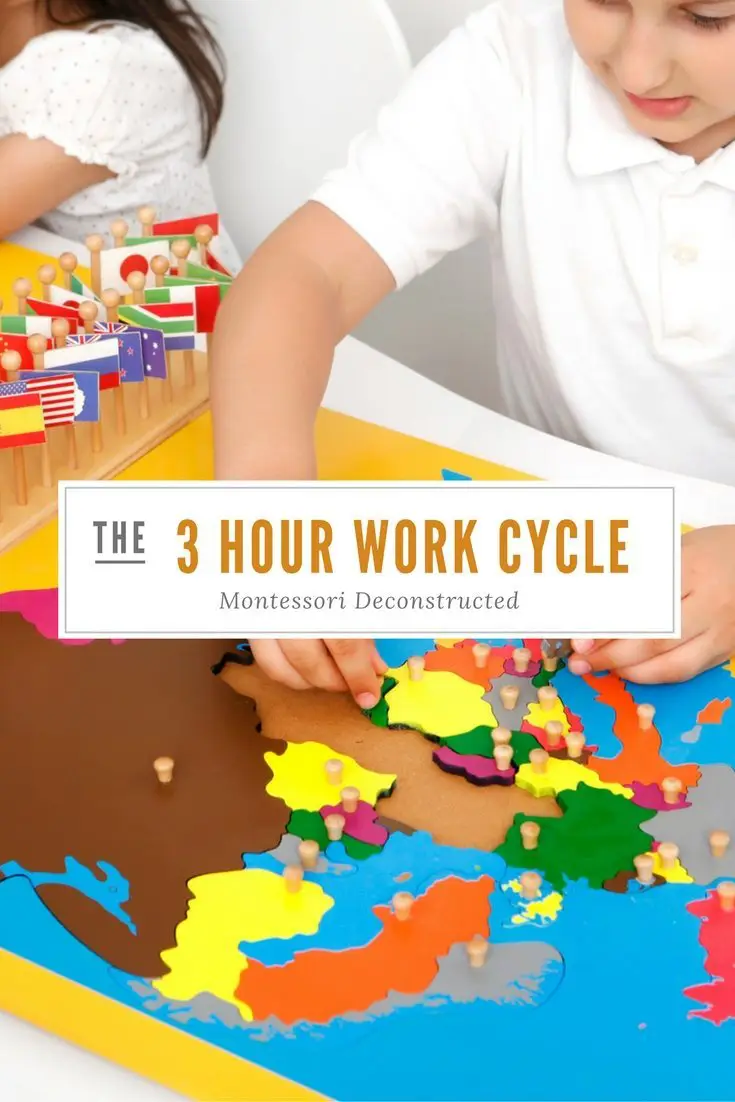Walk into any Montessori classroom and see children wholly engaged in their work. The heart of a Montessori program is the three-hour work cycle. The early childhood environment focuses on concentration, coordination, order, and independence.
Therefore, children must be given the time to fully submerge themselves in work for these traits to manifest themselves.

What is the 3-Hour Work Cycle?
In The Absorbent Mind, Montessori wrote, “…the child can only develop fully using experience within his environment” (88). For a child to develop, he or she needs to have the chance to focus solely on the materials in the environment.
She also wrote, “The essential thing is for the task to arouse such an interest that it engages the child’s whole personality” (206).
The work cycle gives the child opportunities to delve into the work he or she is drawn to and become fully involved in the work, frequently to the point of being able to ignore all activities going on around them.

Montessori’s Three-Hour Work Cycle
Montessori shared a story about a young girl who repeated her work with wooden cylinders. To find out how deeply she was concentrating, the other children in the room sang and danced around her.
Montessori then picked up the chair upon which the girl worked. However, this did not break her concentration. After working with the materials forty-two times, she seemed satisfied with her work without being exhausted.

As the work cycle begins, a child may wander around the room. They might socialize with classmates or look for work that he or she finds engaging. A teacher might give a lesson or guide a child to choose a specific material during this time.
As the morning progresses, children find work that interests them. If interrupted, they will not be able to develop the concentration that allows them to emulate the story above and work amid distractions.
What are the “hoped-for” outcomes of a three-hour work cycle?
- A deeper concentration
- Satisfaction with the completion of the work
- The desire to learn through the materials
- Excitement about and focus on the work
These outcomes are evident in the faces and behavior of Montessori children. They are actively learning in the environment established so thoughtfully created by the work cycle. Therefore, classrooms hum as the children radiate joy in their work.
Maria
